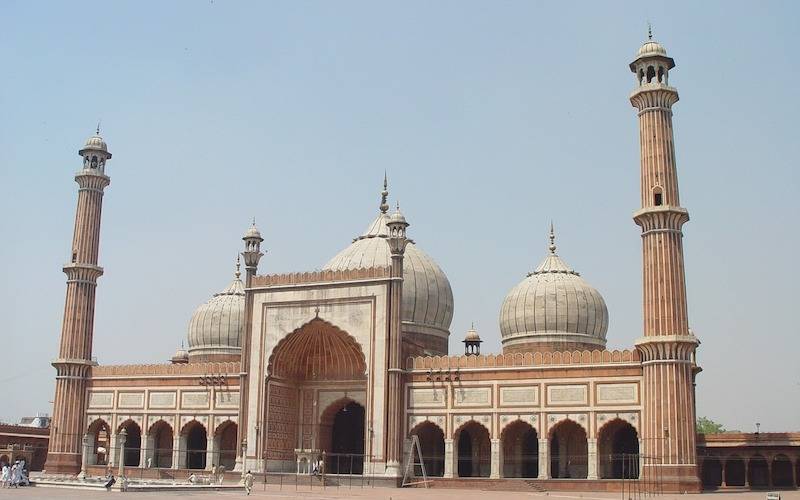One of my favourite countries EVER to visit is India. With it’s religious diversity and historical sites, India is any temple seekers delight. Yes, there’s the Delhi-belly and the scams to be aware of, but with careful planning and having your wits about you, backpacking India will be one of the most intense and exciting trips of your life.
When is the best time to go Backpacking India?
The ideal time to visit India is generally October to March when the weather is warm, dry and sunny. The Himalayas are cold but clear. This is peak tourist season and the time when most people go backpacking India. Around April to May, the temperatures and humidity start to increase along with periodic thunderstorms, so this part of the year is when it makes the most sense to head up into the mountains. From June to September the Indian Plains are scorching and many locals retreat to hill stations to escape the heat, eventually, the cooling monsoons sweep across the country.
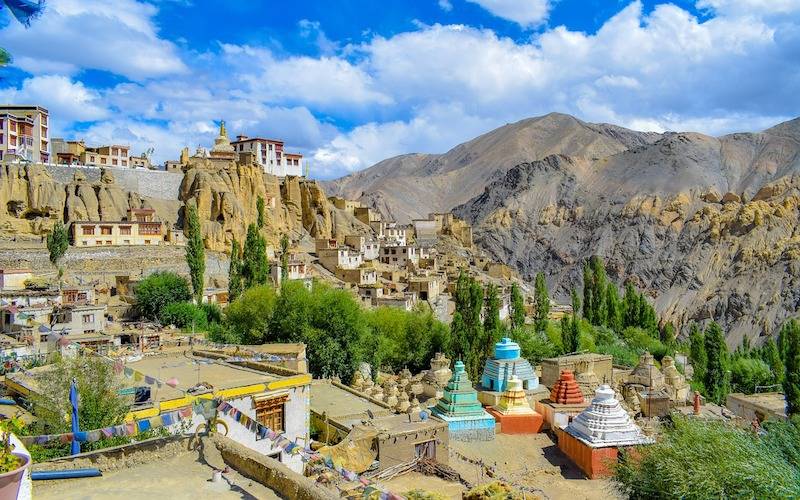
Backpacking India – Money
India’s currency is the rupee, with Rs100 equal to £1.09 or $1.41. The rupee is a closed currency, meaning you’re not permitted to take more than Rs25,000 (just under £300) out of the country. India is a very affordable place to travel, and depending on your choice of restaurants and accommodation, you can easily get by while spending very little. Remember that touristy spots such as Goa will require more money than more remote or rural parts of the country.
Hostels
A dorm bed in a hostel can be as little as Rs400 per night– private rooms will of course be more, though you’ll be able to find them for as little as Rs550 per night.
Restaurants
Meal cost depends mainly on your preferences. If you choose to eat a top meal in a Western style hotel (it will still cost less than you’d anticipate), but you can also equally get a delicious traditional meal for a small fraction of the price. A thali at a smaller restaurant can only cost about Rs150.
Alcohol and Nightlife
You should expect to pay around Rs100 for a pint of beer. Bars and nightclubs aren’t a major part of India’s culture, and most are aimed at wealthier Indians or foreign travellers which means that it will be easier on the pocket than a night out back home. However, drinking is not one of the most budget-friendly activities in India.
Groceries
Groceries will be typically be very cheap in India. Two pints of milk costs an average of Rs50, while a loaf of bread will come in at around Rs30.
Toiletries
Toiletries are also fairly affordable. A regular bottle of shampoo will be around Rs200, while a tube of toothpaste should be less than Rs100.
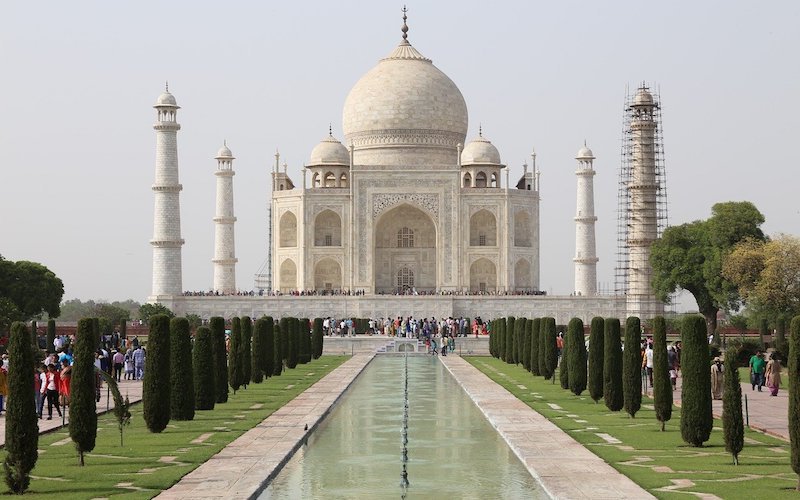
Backpacking India – Health and Safety
If common sense is used, India is, on the whole, a safe and rewarding place for backpackers to travel. Bear in mind, though, that foreign travellers are more vulnerable to petty crimes such as theft, particularly at major landmarks.
Belongings
Keep belongings close at all times and keep caution, particularly in bigger crowds, or in spots known for tourism like Goa. Western tourists can sometimes attract attention from locals. Though there have been some serious incidents in recent years, violence against tourists in India is generally quite rare. Nevertheless, a lot of people feel more at ease travelling with a companion through India.
Weather and Monsoon Season
It’s also best to avoid travelling to the south during monsoon season. Heavy rainfall may lead to mudslides and dangerous flooding in places like Kerala.
Vaccinations
It’s recommended that foreign travellers have jabs to protect against hepatitis A, typhoid and diphtheria. Malaria is also a serious problem in India, and you may need to take anti-malaria medication. If you think you have symptoms of malaria, such a flu-like feeling, fever and headaches then seek medical attention immediately.
What to Take
When you’re on your travels, it is worth having some strong bug-spray and some bug bite cream. Plasters won’t go amiss either. Be aware, too, that although Western-style loos are becoming more ubiquitous across India, many toilets will not have toilet paper so most backpackers will keep a ready supply in their bag.

Transport in India
Cross-country travel in India is an adventure, whichever way you choose to do it and the country’s enormous size means you’ll spend a lot of time in transport. If you only have a limited amount of time in India such as 2-3 weeks, I would recommend that you focus on one particular state (such as Gujarat or Rajasthan) or a simple route (such as the Golden Triangle)
Train
This is one of the most economical and practical ways to get around the country. It’s a marvellous way to take in some beautiful Indian scenery, from forest-covered peaks to tea plantations. The finest piece of advice is to be flexible as the trains may not always run to schedule.
You’ll have a much more relaxed trip if you take this in your stride. Given India’s sheer scale, journeys are often long. Choosing sleeper class is a good way to save some valuable time for sightseeing in your schedule. You’ll need to book in advance to get a bunk as trains can become very packed. The overnight carriages are lined with bunks and you can pull them down ready for a night’s sleep but remember to bring a blanket and some ear plugs if you can.
Bus
Like trains, there are a range of bus services and classes available. The most affordable and basic are the government-run services, but these are awfully busy, and the buses are normally a little worn out. Private services can offer more comfort and they should cover a similar number of routes. Classes range from “ordinary” to “semi-deluxe” and “deluxe”. The gradings are a little vague and cannot always be relied on but “ordinary” options are the cheapest and have harder seating and very little room (I once ha d a lady sat on my lap for three hours!!!).
The higher-band options should have more comfortable seating and increased space (though this is not guaranteed). Some services may also have air con.
Car
It’s not recommended that foreign travellers drive in India. If you’re desperate for the freedom of the road, it’s best to hire a driver along with your car. Costs will vary depending on the length of your journey and cars can usually be arranged through your accommodation or the tourist office. Trustworthy companies include Swagatam Tours and Car Rental Delhi in northern India.
Tuk-Tuk
A tuk tuk is an iconic modes of transport in India. You’ll see them zigzagging between the traffic, overloaded with tourists and locals alike. Try to agree a price before getting in, as many drivers don’t use a meter. Normally you shouldn’t expect to pay above Rs25 to travel some kilometres.
Where to go in India
Golden Triangle
The Golden triangle in India consists of three main Northern cities with the top sites – Delhi (Red Fort and Jama Masjid), Agra (Taj Mahal) and Jaipur (Wind Palace, Monkey Temple). This was perfect for me over 2 weeks and we managed to add Pushkar in the mix. There is a great 5 day package tout of the Golden Triangle bookable on Viator travel.
Mumbai
Head to Mumbai (formerly Bombay) for the financial centre of India and India’s largest city. Visit the Gateway of India (Built by the British Raj in 1924) and Elephanta Caves (cave temples dedicated to the Hindu God Shiva). There are some amazing temples in Mumbai and is likely to be where you fly into for exploring Maharashtra. You might also like to check out these historic places in Mumbai.
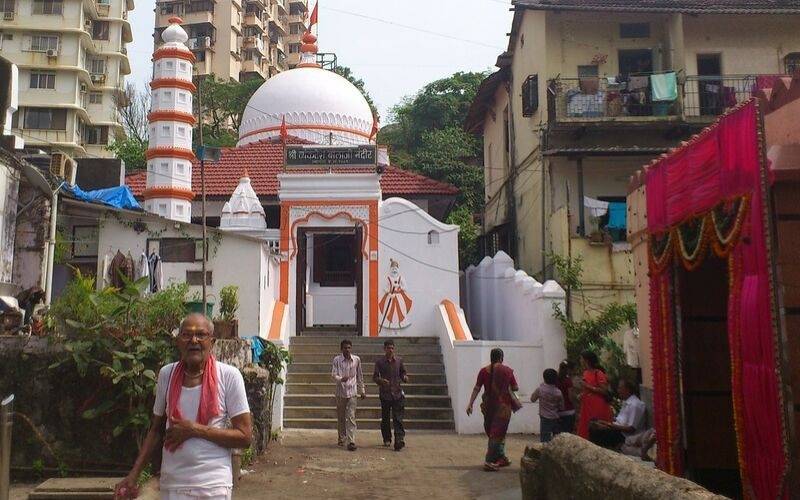
Tamil Nadu
Mahabalipuram, less than an hour from Chennai in Tamil Nadu, is one of the top beaches on India’s east coast. The town is known mainly for its 7th century UNESCO World Heritage monuments carved out of stone and stone sculptures. However, it also has a thriving surfing scene.
Golden Temple – Amritsar
Amritsar’s exquisite Golden Temple is one of the most recognized landmarks in India. This sacred Sikh shrine is truly a sight to behold. Jugaadus Eco Hostel is the most popular backpacker hostel in the city, and it runs its own tours including to the Wagah Border for the flag ceremony.
Rishikesh
Rishikesh is an eclectic city that attracts an interesting mix of tourists – including adrenaline junkies, foreigners, and middle-class Indians. The city is located at the foot of the Himalayas and along the banks of the holy Ganges River. It’s the epicentre of India’s yoga scene, with dozens of ashrams and hundreds of yoga instructors (see this article on Yoga teacher training in India). It’s also a massive adventure sports hub, with trekking, river rafting, bungee jumping, and zip-lining available.
Haridwar
Around an hour from Rishikesh, Haridwar is a Hindu pilgrimage site and is one of India’s holiest cities. Har Ki Pauri, a hallowed ghatleading into the River Ganges is in Haridwar and its name translates to “Footstep of God”.
Scams to Avoid when Backpacking India
Unfortunately, there are many scams in Delhi and some other cities in India that you need to be aware of so that you don’t get conned or ripped off.
The Gem Scam
A local will come up to a solo traveller to practice his English and may feel guilty and start engaging. Once everyone gets friendly enough, the scammers will bring the victim to a lavish home and talk to them about a business opportunity using the victim’s duty-free allowance. All that the victim needs to do is to send a parcel of gems to a post office overseas which he himself will pick up and hand over to their representative.
What follows is a series of coercion involving accomplices which will end up with the victim finally agreeing to pay for the ‘gems’ through his credit or debit card. To avoid this scam, join a group of other tourists in your hostel. Be cautious of anyone being friendly and inviting you the next day for a tour of the city. Remember that this scam is expertly orchestrated with scammers taking the time to take their victims around the city for a couple of days to establish trust.
The New Hotel Scam
First, the taxi driver will pretend not to know where your hotel is and recommend a new hotel (where they get commission). Another version is that the driver will tell you that the hotel you’ve booked already moved or has been renamed under a different management.
To avoid this scamfg, get a local SIM card (from the official stores of Vodafone, IDEA, or Airtel). Have your hotel’s number and address ready. Call them if your taxi driver begins to tell you any of these excuses. If your phone has internet connection, check the map on it and tell the driver the directions if he seems to be going the wrong way.
The Pens and Milk Scam
What if someone asks you to follow them to buy their children’s milk or if a child tugs your hand asking you to buy them a pen? People may think it’s okay to give beggars food or clothing but not money. The scam occurs once you turn your back, the child or woman will return the product to the shop owner in exchange for cash. To avoid this scam, ignore the beggars. It can be hard if you are compassionate, but if you really want to help, go to popular charities in India to make sure that your money will go to the right people.
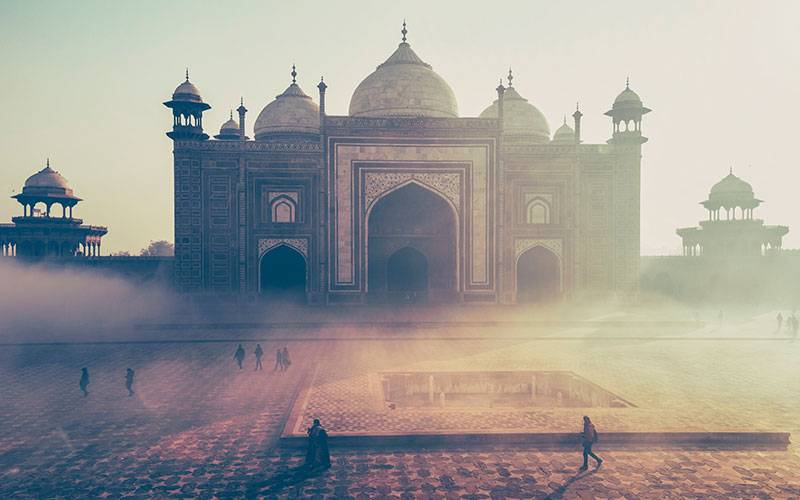
Top Tips for Backpacking India
Preparing is key to Backpacking India
Planning routes, activities and modes of transports in advance is a good way to help your trip run smoothly and potentially stop you from getting lost. It also allows friends and family at your hostel know where you are for each day.
Buy a local SIM
Buying a SIM card which works in India will help you keep in touch with people that you meet when you’re out and about. You’ll also be able to seek help should you get lost or find yourself in a situation you’re uncomfortable with.
Believe in your gut Instinct
If a situation doesn’t feel right, it possibly isn’t. This can include feeling uncomfortable when walking around in a dark place by yourself at night or handling a stranger offering you help that you don’t need. Make sure to keep your wits about you and try to manage the situation as best you can.
Make friends along the Way
When you are backpacking India, staying in a hostel is great way to meet people. You can swap stories, share tips and perhaps even team up for a leg of your journey.
Consider packing conservative clothing and a shawl or headscarf for women if you would like to visit religious places. Some comfortable sandals work well in India as it can be hot so they will let your feet breathe. It can get extremely hot in some parts of India and so sun cream is essential.

It’s a good idea to pack conservative clothing for India. Avoid short skirts and low cut tops or spaghetti straps. Comfortable trousers and linen tops are great. Long skirts and Maxi dresses also work really well and are comfortable with the heat. Comfortable loose cotton or linen trousers are perfect. Don’t forget your sunglasses, and pack your prescription sunnies if you have those!

If you’d like to read more about travelling in India you might also like…

